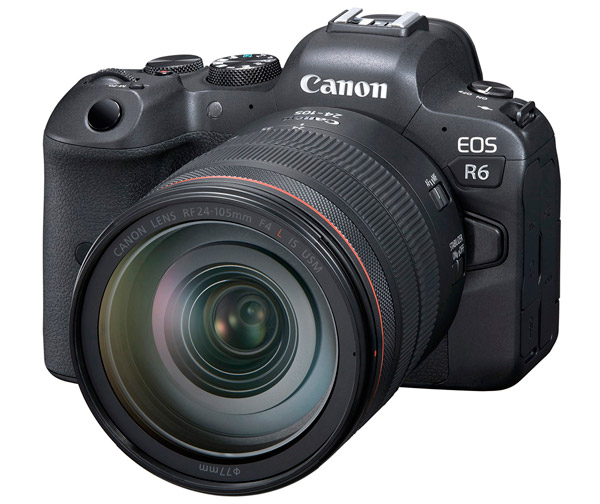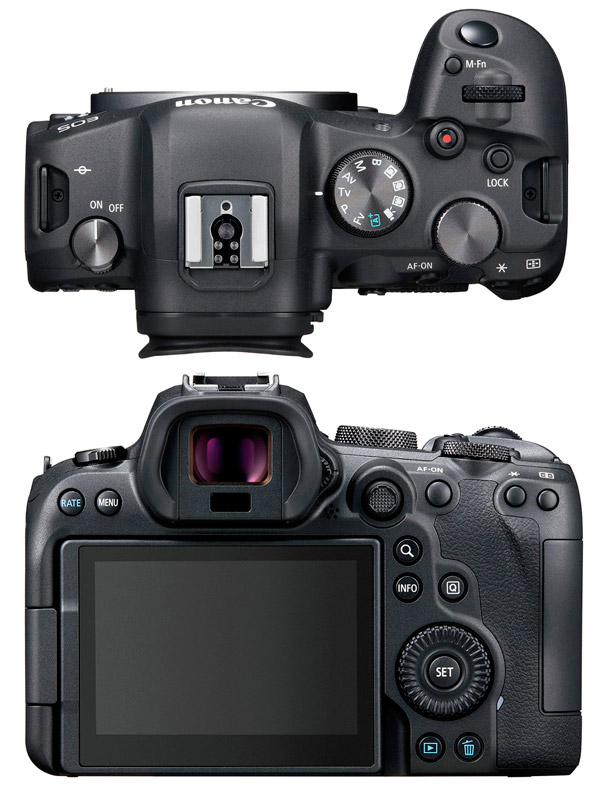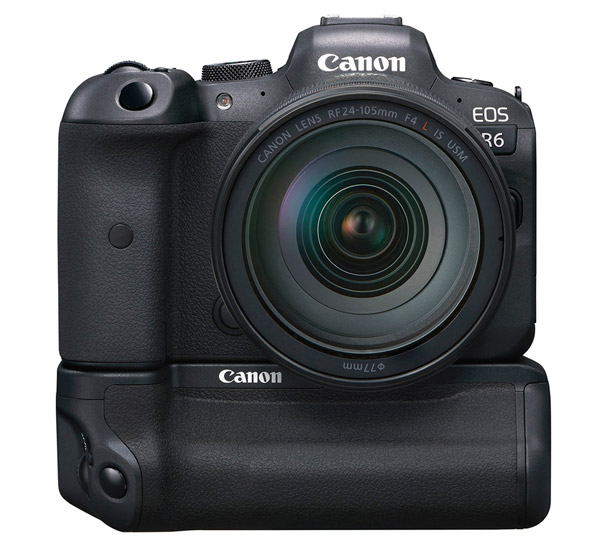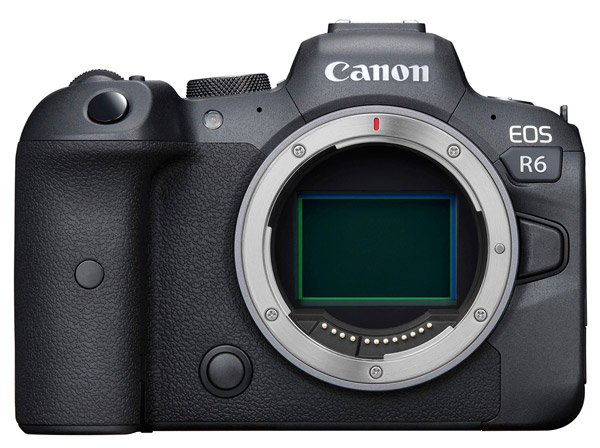On 7/9/2020 the Canon EOS R5 and R6 were announced. While the R5 looks really impressive, it’s the R6 that I want to talk about the most. Overall, it looks like an exciting tool and I’ll be going over why. I’ll also talk more about the RF mount in general, a bit about new lenses, and the EF-M system.
Check out my affiliate links to the cameras mentioned.
Get the Canon EOS R6 through my links:
B&H: https://bhpho.to/3gITCZH
Amazon: https://amzn.to/2BYOB0v
Best Buy (body): https://bestbuy.7tiv.net/M9AqK
Best Buy (kit): https://bestbuy.7tiv.net/dmOWK
Get the Canon EOS R5 through my links:
B&H: https://bhpho.to/38K7AYM
Amazon: https://amzn.to/2ZdKVAD
Best Buy (body): https://bestbuy.7tiv.net/v7Paj
Best Buy (kit): https://bestbuy.7tiv.net/41GNo
See my work-for-hire R6 camera kit:
https://kit.co/photographybanzai/canon-rf-work-for-hire-camera-kit
This announcement is a big deal for Canon. While they made the transition to full-frame mirrorless with the EOS R and RP, those bodies are lacking a few features from the DSLR world such as dual memory card slots and high speed photography capability. The two new cameras are more in line with Canon’s current RF lens collection that tend to be ultra high-end such as the 28-70mm f/2.

The R6 is likely using the same sensor as the flagship Canon EOS-1D X Mark III. It received a sensor score of 91 from DXOMark. It currently has the best dynamic range of Canon sensors at ISO 100 and 200 and is rated 3248 in their ISO test. This might change once the R5 is tested by them. For comparison sake, the D850 has an overall score of 100 with and ISO rating of 2660. The point here is that the sensor seems good enough. It’s nothing amazing, but definitely good enough for many people.
That said, I’m sure people will find aspects of the cameras that don’t fit their needs in some way. I’ll throw a few out there to get started, lol.
What I could see people complaining about:
- 20 mega-pixels could be a point of contention for some. Had this sensor been 24 MP instead of 20, I think it could have been more interesting to people that are really into heavy post-processing.
- The micro HDMI port isn’t ideal. Mini or full sized would have been much better.
- There is apparently a slight crop in 4k mode of 1.07x on the R6.
- Video modes have the old ~29 minute 59 second cap per clip. I personally find this one especially frustrating now that Sony showed it’s possible to transition away from the artificial cap. Those caps shouldn’t be there anymore and whatever countries or trade organizations forced the industry to do this years ago… I’ve got very unpleasant words for you.
- Battery life estimates are not amazing, especially on the R5. Using the EVF plus 120 fps will be the lowest numbers. Check the official spec sheets for exact numbers but it’s like ~230 frames per charge.
- Fully articulating screen. Some people don’t like it. It’s a personal preference thing.
- The main mode dial doesn’t have a physical lock on the R6. This is a personal preference thing as well.
- Neither camera is designed for one handed operation due to the placement of the on/off switch. This is the same for every RF camera thus far. I personally don’t have an issue there, but I get it.
- The R6 doesn’t have 5ghz WiFi like the R5. If you want fast wireless transfer then the R5 is the way to go. I wonder why they would hold back that feature?
- $2500 body only price on the R6. The much older Sony A7 III is still looking pretty solid compared to the R6. That goes for $2000, so I guess it’s not a huge gap considering how long the A7 III has been on the market.
There will never be a perfect camera that can work well for everyone and every use case. These releases and similar cameras from other makers are getting closer and closer to a hybrid camera that can do nearly everything really well. It’s an exciting time for people that want photo and video tools combined.

I see the R6 as the main upgrade path for a lot of people that are in the EF mount. I know at least a few people that didn’t see the EOS R as a good fit. Especially people that do work-for-hire in photography and videography. There might be hobbyists as well, but they could easily get the EOS R and RP on discount. I’m not completely in touch with the needs of wedding photographers. Maybe a lot of them will want the higher megapixels, but on the other hand, maybe they would appreciate 20 MP photos as efficient and sufficient instead. I’m going to assume the high-end fine art level businesses will opt for the R5. If you want a supersized meal in nearly the same package then the R5 is it.
What I could see people being excited about:
- 20 MP means large photosites and manageable files. I’m expecting the R6 to feel like a snappy camera at that resolution given how much processing power it appears to have.
- 12 fps mechanical shutter for photos is a large jump compared to the EOS R. The buffer is a minimum of 91 photos when you are using a slow SD card and RAW+JPEG. With a good UHS-II card expect more like 160 in one go.
- Internal stabilization between 5 to 8 stops. If it works as advertised then it’s going to be best-in-class. Stabilized lenses should be able to work together with the sensor based shake reduction.
- Dual SD UHS-II memory card slots.
- Triple dial ergonomics (two on top and one in the back)
- Focus adjustment nub joystick control (sometimes more convenient than using the touch screen)
- 10-bit 4K up to 60 fps and 1080p up to 120 fps.
- USB C port with 3.1 gen 2 speeds and charging.
- Fully articulating screen.
- The new Fv mode is in the R6 (see the top dial photo). Apparently it is similar to Pentax’s Hyper Program mode. You can let the camera handle some settings while you can adjust others and reset them as desired.
- $2500 body only price. There is a lot packed into the camera.
- The BG-R10 grip accessory was announced with the cameras. It will work on both.

Like I said, in Canon land this camera will be the backbone for the RF mount for a while. It covers a lot and will only get cheaper as time goes on.
Why I like the R6 more than the R5:
- Dual SD card slots instead of CF Express and SD of the R5. The simplicity of one format and it being the easiest format to get a hold of makes it very appealing. There is something to be said about availability when you need a card or two at a moment’s notice. If you forget your card somewhere, you can still get two nearly anywhere so in-camera backup is possible. Good luck finding a CF Express card at any random store.
- Ergonomic simplicity with a 3-dial layout. This is a near perfect setup, in my opinion. You can dedicate a dial to each piece of the exposure triangle. The only thing I don’t like is Canon’s placement of the top front dial being vertical instead of integrated into the grip like Nikon, Pentax, and others do. That’s personal preference of course.
- A simple mode dial with C1, C2, and C3 custom setting save modes easily accessible right on there. This is a great way to go about custom modes. Four would have been even better, but three is a solid amount.
- It strikes a balance of performance and cost. Unless you need the megapixels or ultra high resolution EVF… Or need something like 120 fps 4K… or even the 8K RAW video mode then the R6 fills the gap at a lower cost. However, based on initial reports, the 4K 120 fps and 8k modes on the R5 could have quirks upon release. Hopefully they can harden those features before the R5 comes out.
EDIT: Max Yuryev (via NewsShooter it looks like) found information detailing heat related limitations of the R5 and R6. I was surprised to see that the R6 will have drawbacks as well. How it will work in practice is difficult to say. It’s saying that 4K60 will be 30 minutes of continuous use and 40 minutes with 4K30 on the R6 in a 73 degree environment. Not ideal…
Is this my entry point back into full-frame?
It’s not in my budget.
Yeah, I joke about it a lot, but it’s essentially true. Hopefully the YouTube channel can grow exponentially in the near future. Another bad joke, but I’m riding on fumes 9+ years in. I am certainly thankful for everyone that does watch! You are the true heroes.
Looking at the system from a practical point of view, I do think there is reason for people to wait. If you prefer native lens options then RF still needs time to grow. It’s especially true in the entry and mid level not including the two kit lens.
The 35mm f1.8 was a good start, but there isn’t a native 50mm f1.8 yet, which would be a big one for me. The recently announced 85mm f/2 IS macro is another good sign that Canon is interested in filling out the lens line-up. They also will have the 600mm and 800mm f/11 prime lenses under $1000.
So at this point I’d like to see lower cost ultra wide options. Maybe an f/4 IS prime that hits around 16mm or 20mm. It could even be something like an ultra wide f/5.6 with IS given Canon is open to unique designs like the aforementioned 600 and 800mm RF lenses announced.
I’d also like to see the nifty fifty in ~f/1.8 as mentioned. The a 135mm focal length too, but I’d expect that one to be pricey. If they did all of that and also release a 70-200mm f/4, then I’d say that RF is ready for action with native 1st party lenses that can cover most work.
Tamron and Sigma have confirmed that they will be releasing lenses for RF. Once that happens then the system will really be worth considering.
All of this RF talk brings me to EF-M. It’s the system I’m using currently with a pair of M50 bodies and an M5. I have a decent set of glass now as well. Right now I’m debating over getting the Sigma 16mm f1.4. EF-M has a severe lack of long lenses, so it’s definitely not a format for people that rely on specific long focal lengths unless they don’t mind adapting lenses.
All of this brings me to EF-M. Will there be at least one EF-M camera with IBIS?
The question of EF-M viability comes up occasionally in my YouTube comments. I wrote an article about it in late 2018. It’s true that Canon has been quiet with the mount since its inception, but they did release the 32mm lens and the M6 Mark II somewhat recently. We had Sigma release their DC DN lenses in the format, of which I personally own the 56mm f1.4.
After using the Canon EOS M100 for a while and eventually selling it… and then buying a used M5, I realized that I want at least one photographer camera body at all times. The M50 is nice, but not having custom modes is a big downside.
The M5 has a feature set that covers a decent amount of what I like to call “photographer convenience features“, but the laggy animated menus do bother me. It’s got a type of slowness to the interface that Canon managed to lessen a lot in the M50 and likely the M200/M6 Mark II (I haven’t used those two).
The M6 Mark II could give me some of that M5 experience with most of the convenience features, but that add-on viewfinder is really unappealing. I want a bigger integrated viewfinder than what’s in the M50, not a compromise that’s removable.
Could there be a somewhat smaller and less expensive R6 styled camera in the EF-M mount? The rumors I’ve seen suggested that it is possible. If Canon wants the APS-C market where the Fujifilm X-T4 and A6600 exist, then they would need to step up.
Don’t get me wrong. I think that the M6 Mark II is a nice functional camera, but if I eventually get one when prices drop, I’d probably use it more for video as a b-roll camera. I’d use it like a smart phone when taking photos too, but I wouldn’t want the EVF accessory for that because the point-and-shoot nature is the reason to get that camera.
The M6 Mark II would be something I’d take along with my main photo camera to record myself for YouTube videos. Something I’d make casual photowalk videos with as the photo camera.
The M100 worked pretty well for that use case, but it wasn’t enough to keep it around at at time when I wanted extra cash. I’d also consider the M6mkII as a studio camera, but it isn’t cheap and the 30 minute per video clip cap that Canon insists on keeping makes it less appealing than a Sony A6400 for that task.
Will there be something like the M5, or even a step up on the level of the X-T4? There is no way of saying at this point. When the M6 Mark II came out, Canon was pretty forth coming with saying that the M5 series was done. If that meant something bigger and better with IBIS, then I’d say it’s a good trade-off. I think a lot of people want the M6 and M5 series to be complimentary, not effectively the same less a viewfinder. Make the M5 successor bigger and photographer/hybrid focused. The M6mkII is the small compact… yet still quick, camera.
I like small cameras, but the M50 and M5 are on the limit of what my hands can take for extended periods of time. Especially when I adapt an EF mount lens to get telephoto. Things like memory card placement on EF-M cameras can be frustrating. In expensive higher-end cameras it’s a large collection of little things that matter. In this case make it ergonomically and feature fitting with a camera of it’s level.
I don’t expect Canon to be done with EF-M any time soon. They’ve given no indication, and the M50 exploded in popularity for a long time. I’d expect a replacement for the M50 at least if not that and something else. We will see! I’m hoping for an X-T4 level of camera in the EF-M system, but hopefully not as expensive.
See my work-for-hire R6 camera kit:
https://kit.co/photographybanzai/canon-rf-work-for-hire-camera-kit
Check out my affiliate links to the cameras mentioned.
Get the Canon EOS R6 through my links:
B&H: https://bhpho.to/3gITCZH
Amazon: https://amzn.to/2BYOB0v
Best Buy (body): https://bestbuy.7tiv.net/M9AqK
Best Buy (kit): https://bestbuy.7tiv.net/dmOWK
Get the Canon EOS R5 through my links:
B&H: https://bhpho.to/38K7AYM
Amazon: https://amzn.to/2ZdKVAD
Best Buy (body): https://bestbuy.7tiv.net/v7Paj
Best Buy (kit): https://bestbuy.7tiv.net/41GNo
Thanks for your consideration!

